Shades of Azraq Reserve: Environment and Journalism Echoes
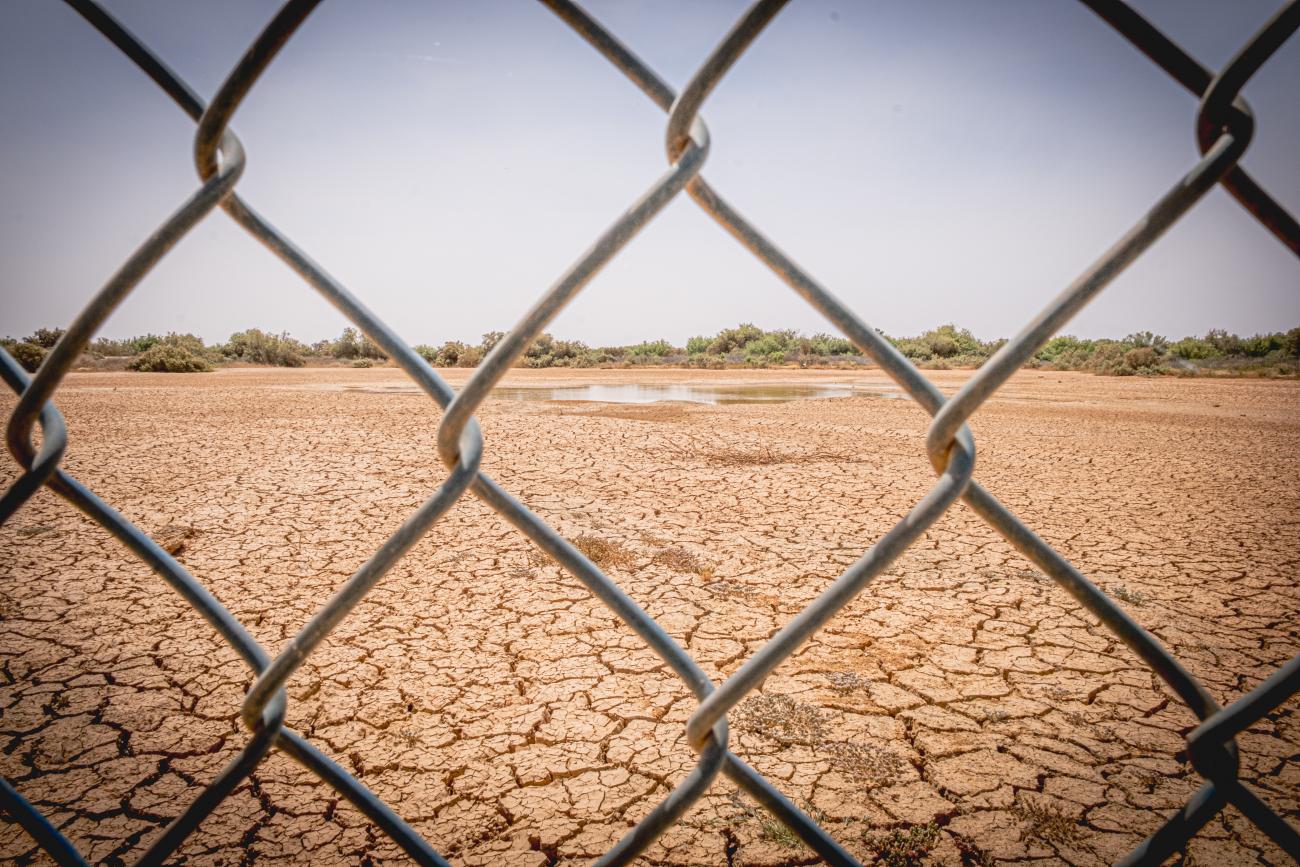
The Azraq Oasis stands as a living witness to the major environmental challenges facing Jordan amid rapid climate change.
During my 2022 documentary filming at the Azraq Oasis, I met a resident who had witnessed the major transformations of the oasis, with only 10% of its 1980s extent remaining. When asked what he missed most about old Azraq, he replied, "I miss swimming in the oasis waters," and after a pause, he added, "I regret not teaching my children to swim there!"
Initially, I didn't understand the reason for his deep regret. For me, growing up and living in the city, swimming seemed like just a summer recreational activity practiced in clubs or hotel pools. However, as days went by and I interacted with others from the oasis, I began to realize the depth of their feelings. Swimming was a vital skill for them; the oasis, covering about 20 km2, was an essential source of food and transportation, especially when fishing was relied upon.
These personal stories and emotions led me to appreciate that environmental changes do more than strip communities of elements of their identity; they also impose harsh challenges on them.. These experiences have reshaped my approach to environmental journalism and prompted me to consider the role that journalists should play in addressing these pressing issues.. but also impose significant challenges on them.
These personal stories and emotions led me to appreciate that environmental changes do more than strip communities of elements of their identity; they also impose harsh challenges. These experiences have reshaped my approach to environmental journalism and prompted me to consider the role that journalists should play in addressing these pressing issues.
These stories and emotions inspired me to realize how environmental changes not only deprive individuals and communities of parts of their identity but also impose severe challenges that may seem insurmountable. These experiences have transformed how I approach environmental topics and have raised questions about the role that journalism should play in covering these issues.
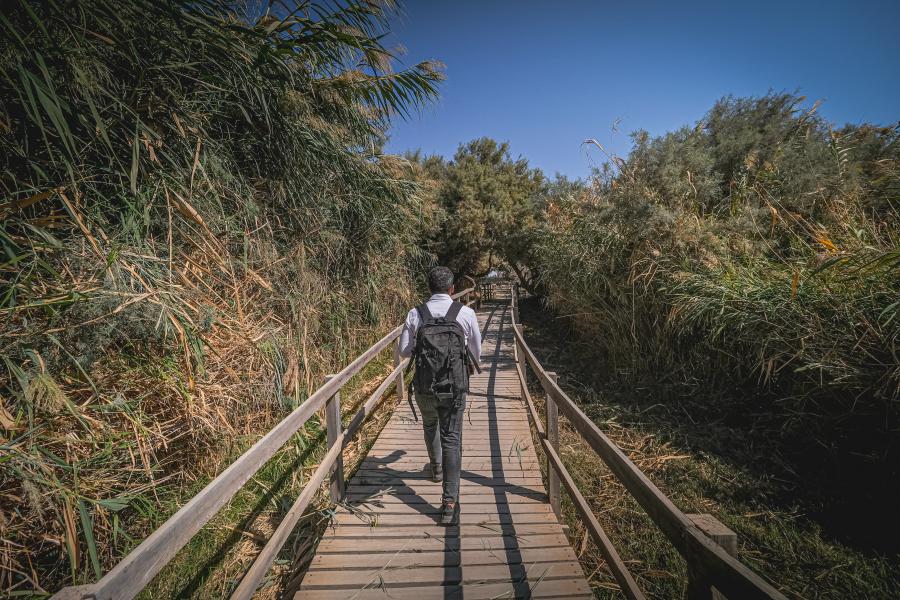
Witnessing Change: The Environmental and Social Shifts of Azraq
The Azraq Oasis stands as a living witness to the major environmental challenges facing Jordan amid rapid climate change. Located about 110 kilometres north of Amman, in the heart of the Eastern Desert, this ancient town has historically served as a passage and rest stop for trade caravans traveling through Jordan. It has also welcomed waves of refugees from Chechnya, the Druze, and, more recently, Syrians. Azraq is renowned for its unique desert oasis, which has faced significant environmental challenges since the 1980s, altering its nature and imposing economic and social challenges on its inhabitants.
During that period, while Jordanian cities were being supplied with 60 million cubic meters of water annually pumped from the Azraq Basin, the oasis began gradually losing its water and plant resources. By 1992, it had lost about 99.6% of its water and plant cover, leading to a severe deterioration of the ecosystem. Excessive pumping, coupled with rising temperatures, drought, and fluctuating rainfall, exacerbated the environmental challenges facing the oasis.
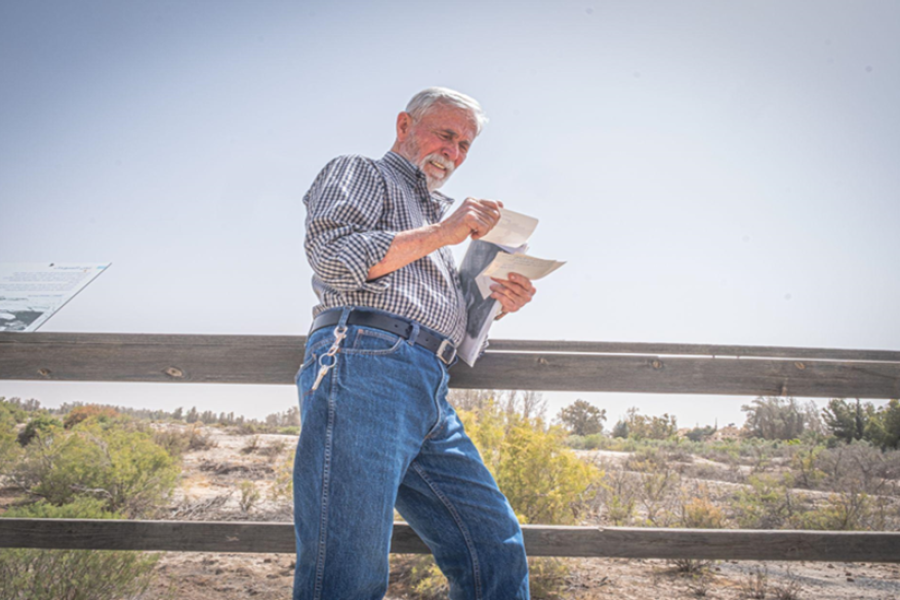
Mohammad Samdah, a Chechen elder in Azraq, was born there in 1945 and witnessed these changes over the years. Samdah says, "Azraq was a paradise, with water pools stretching over an area of 20 km2, stunning nature, an oasis in the middle of the desert where people lived off its bounty. Our lives were simple and beautiful; the oasis and the pools were our source of strength. Fish, buffalo, and cows were abundant, and we lived of them. We didn't farm because the land was salty, but we had everything we needed."

Samdah continues, ‘In the late 1980s, the water coming from the Dusha area - the water source - gradually diminished, drying up. Consequently, the herds of sheep, cows, and buffalo began to show signs of weakness and fatigue because they no longer had sources of water. Fish populations gradually decreased until they disappeared.’
Samdah adds, “Our lives also changed; life became harder, and many people left because they lost all the basic sources of life. We started living in a desert, even the salt we relied on disappeared”.
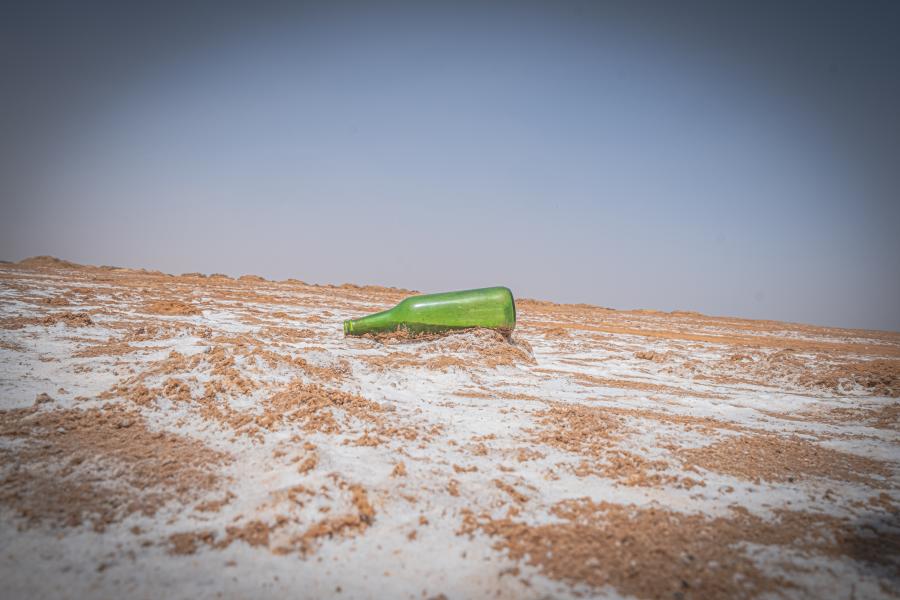
Living on the Edge: Challenges and Resilience in Azraq
Azraq is situated at a lower elevation compared to neighbouring areas, making it a basin for many valleys where water and salts accumulate, forming layers of salt on the ground that were previously a source of income for the area's inhabitants. However, over time and with the increasing cost of production, Dead Sea salt emerged as a stronger competitor in the local market, offered at lower prices.
The accumulation of these salt layers on the ground contributed to increasing the salinity of the water reaching the Azraq Basin, making it saltier than it was before. This harsh living reality, compounded by these environmental changes, has increased the hardship of life in Azraq for all its residents, including Syrian refugees who sought refuge in the area with the escalation of the war in Syria in 2011. Among them is 'Abu Mukahrab,' who came to the area to work in agriculture but suffered from the floods that hit the region, especially the floods of 2021, which submerged crops and tents.
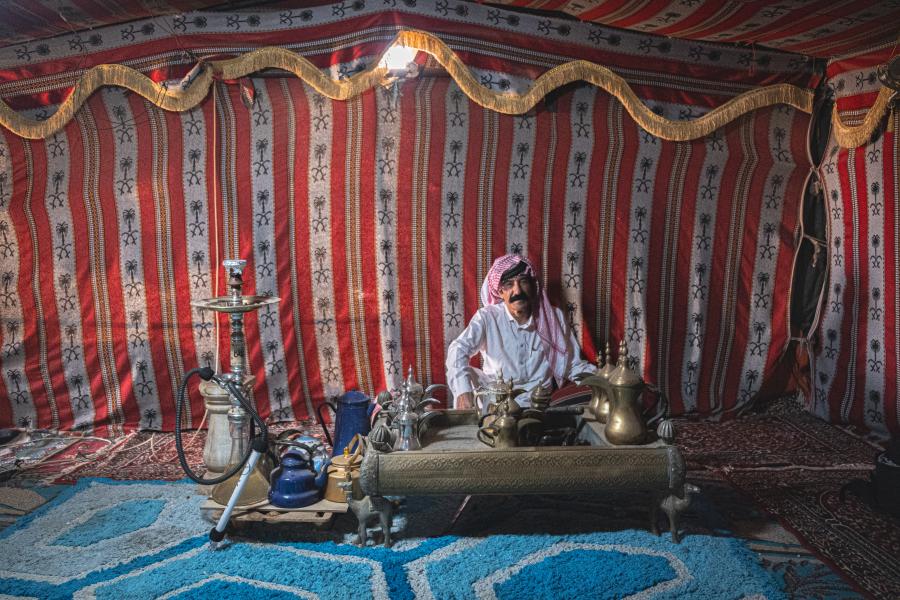
Abu Mukahrab says, “I only know farming, but farming in Azraq has become difficult; last year, a flood came and submerged everything, even the tents we live in”.
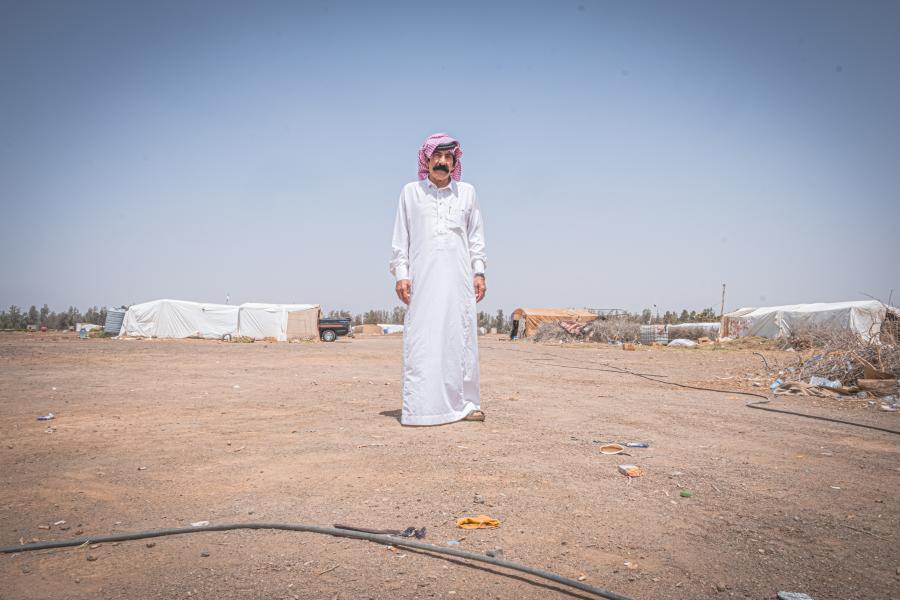
The Royal Society for the Conservation of Nature (RSCN) has managed to reclaim part of the oasis through a rehabilitation process launched in 1992, which was challenged by drought and rainfall fluctuations.
The Azraq Oasis, a vital corridor for bird migration and home to rare fish species, faces the threat of extinction unless protected.
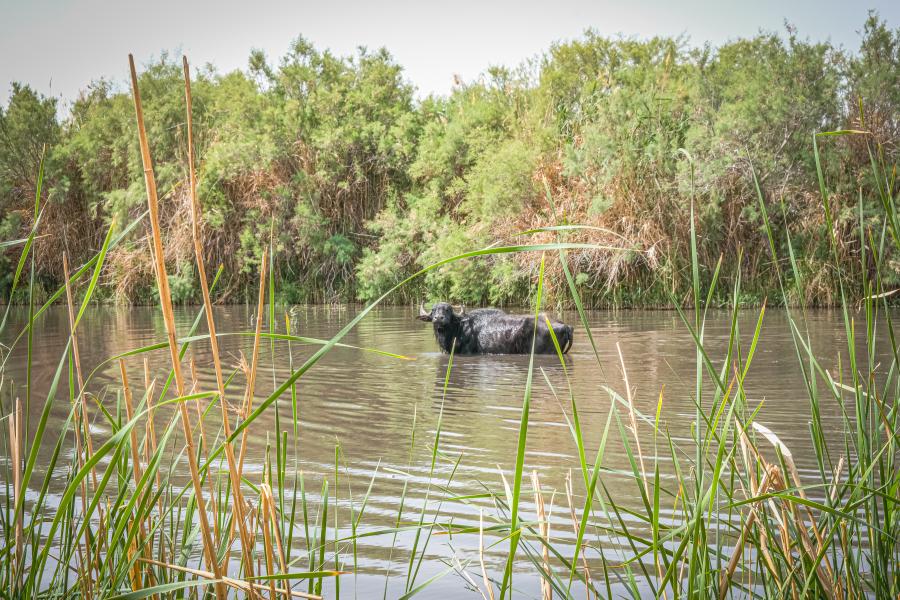
To preserve what has been reclaimed from the oasis, RSCN fenced off the entire reserve to prevent encroachments, especially by bird hunters, and conducts daily patrols along the reserve's borders to preserve this unique natural heritage.
The Role of Journalism in Environmental Conservation
With the increasing efforts to protect the Azraq Oasis and the challenge of environmental storms, the importance of media coverage for these vital issues is emphasized. Journalism in Jordan, which is actively working to raise awareness about climate change, faces a daunting task that requires precise and in-depth knowledge of the surrounding environmental conditions. This task is intertwined with several challenges that hinder journalists' ability to efficiently provide information, especially concerning data collection, understanding environmental terms and phenomena, and collaborating with scientific institutions.
The scarcity of accurate information and data about the environment and climate in Jordan remains one of the main obstacles facing journalism. Additionally, most environmental reports are written in English and are not always freely available, making it more difficult to access accurate information about climate change within Jordan.
Filmmaker and journalist Bayan Abu Ta'ima (26 years old), who recently worked on producing a documentary about water scarcity in southern Jordan and its impact on the agricultural sector, says that the scarcity of resources and specialized research on climate issues, especially those related to a specific geographical area, makes it difficult for journalists to know where to begin in covering these issues and to understand them thoroughly.
The journalist continues: "Unfortunately, the groups most vulnerable to the effects of climate and environmental change are still unaware of this issue. For example, they are aware that temperatures have risen in recent years and that the rainy season is variable, but they cannot connect these phenomena to climate change."
On the other hand, the links between journalists and scientific institutions in Jordan remain weak. This gap almost prevented my ability to deeply understand and cover the situation in Azraq, if not for the cooperation I received from researchers at the Royal Scientific Society.
In this context, journalists play a crucial role as cornerstones in building a knowledge bridge between science and the public, where their stories can lead to tangible changes in awareness and behaviours. The challenges facing the Azraq Oasis urgently call for contributions from all quarters. Here, the responsibility of journalism extends beyond reporting and analyses to become a catalyst for environmental action and a beacon of truth in the face of complex challenges. The path toward environmental protection and combating climate change requires every voice to be heard and every pen to write.
This article and the accompanying photographs were produced with the support of UNESCO in Jordan. The views and opinions expressed herein are those of the author and do not necessarily reflect the official policy or position of UNESCO.


